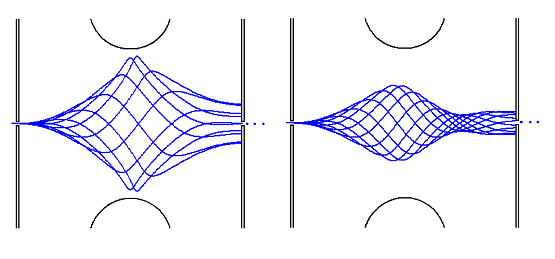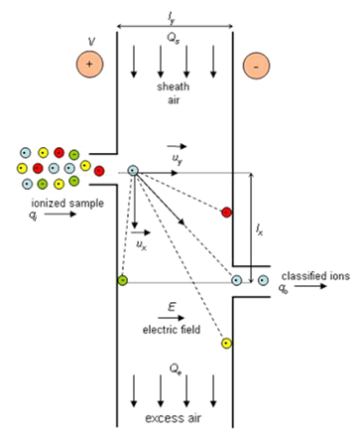New Ion Mobility Spectrometry variants flowering in Spain
Published on 05 Dec 12
Recent years have seen the increasing commercialisation of new ion mobility spectrometry (IMS) variants. A strong push towards new IMS technology is coming from a pair of companies located in Spain; SEADM (Sociedad Europea de Análisis Diferencial de Movilidad SL) and Ramem.
Transversal Modulation IMS (TM-IMS)
SEADM, located in Valladolid, have developed a new IMS technique that they refer to as Transversal Modulation IMS (TM-IMS). This variant of IMS uses an axial electric field in combination with an oscillating transversal electric field to produce a continuous output of mobility selected ions at atmospheric pressure (Figure 1). Selected ions are focussed through an analyzer outlet and deflected ions are not transferred. The selected ions have a narrow range of mobilities due to being separated in space. SEADM have designed the instrument to have accessible inlet and outlets, making it easier to integrate into hyphenated systems such as ion mobility spectrometry - mass spectrometers.
Writing in the recently released free ebook “Ion Mobility Mass Spectrometry - the Next 5 Years”, SEADM R&D Team Leader Guillermo Vidal-de-Miguel states that TM-IMS is an ideal choice for tandem IMS-MS analysis in and that it could even be doubly hyphenated for IMS-IMS-MS analysis as it will reduce background chemical noise with only a moderate loss of transmission. He predicts that the technique will be used for trace detection of explosives and illicit substances, breath analysis, single cell monitoring and specific proteomic detection.

Find out more about TM-IMS:
- Transversal Modulation Ion Mobility Spectrometry (TM-IMS), A New Mobility Filter Overcoming Turbulence Related Limitations; G. Vidal-de-Miguel, M. Macía, and J. Cuevas; Anal. Chem., 2012, 84 (18), pp 7831–7837; DOI: 10.1021/ac301127u; Publication Date (Web): August 27, 2012
- Vidal-de-Miguel, G. Method and Apparatus to Produce Steady Beams of Mobility Selected Ions Via Time Dependent Electric Fields. U.S. Patent Application No. 20100243883, 2010
IONER High Resolution IMS
Over the last 5 years Ramem have been developing an Ion Mobility Spectrometer based on Differential Mobility Analysis (DMA), with a high sheath flow of gas that gives higher sensitivity and resolving power than drift time IMS (Figure 2). Traditionally, cylindrical DMAs are used for the analysis of submicrometer aerosols rather than ionised molecules. Writing in “Ion Mobility Mass Spectrometry - the Next 5 Years”, Chemistry Researcher at Ramem Silvia López states that a major advantage of DMA over drift time IMS is that it works continuously rather than in pulse, allowing detection during the stabilisation time. Ramem are working on minimising ion losses during DMA and are aiming to have a complete DMA-MS system by the end of 2013.

Read more about Ioner, high resolution IMS:
- Santos, J. P., Hontañón, E., Ramiro, E., and Alonso, M.: Performance evaluation of a high-resolution parallel-plate differential mobility analyzer, Atmos. Chem. Phys., 9, 2419-2429, doi:10.5194/acp-9-2419-2009, 2009
- Ioner